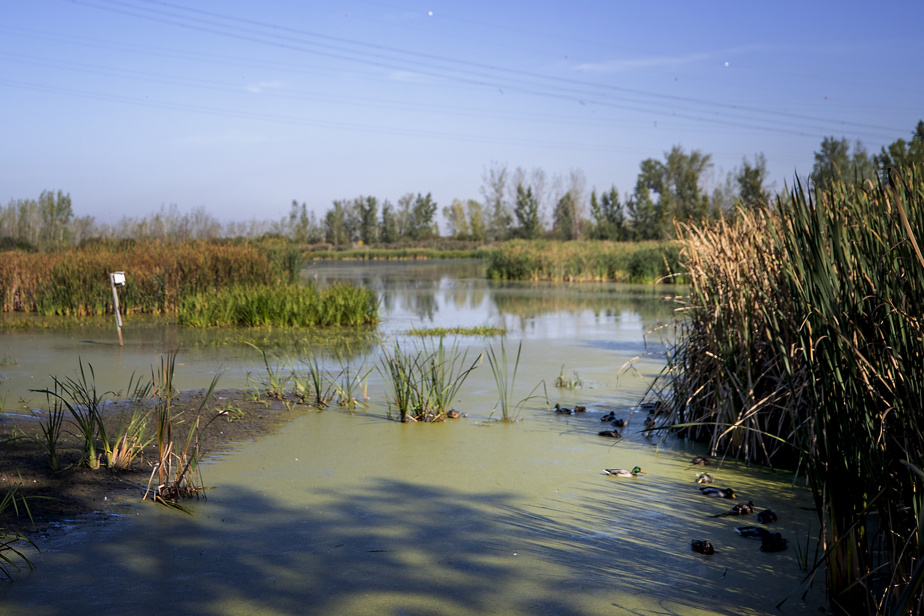The state of the St. Lawrence River continues to deteriorate, confirms monitoring carried out by Quebec and Ottawa. Some indicators are even showing their lowest level in decades. Five-point report.
Water that is less and less oxygenated
This is one of the most damning findings in the Global Portrait of the State of the St. Lawrence published Thursday: its oxygen saturation and pH – that is, its current level of acidity – “have reached their lowest level since 1930.” At the Ministry of the Environment, these two criteria are considered to be indicative of an “intermediate,” or even “poor,” state. Visibly concerned, the committee’s experts also write that “the acidification of the deep waters of the estuary that has occurred over a short period of time can cause negative effects on several organisms,” fish and other aquatic animals.

PHOTO OLIVIER PONTBRIAND, LA PRESSE ARCHIVES
The estuary of the Saint-Laurent River, at the level of Sept-Îles
The temperature is rising
The water temperature is also considered bad “due to the record levels reached since 2015,” we learned. In 2022, the average surface water temperatures for the month of August, and those from May to November, even “reached maximums never observed since 1981,” according to the committee. Result: the average temperature at a depth of 300 meters “exceeded 7 °C for the first time” two years ago. And since the surface water temperature “is directly linked to the warming of the atmosphere,” the climate crisis does not help, the experts add.

PHOTO EDOUARD PLANTE-FRÉCHETTE, LA PRESSE ARCHIVES
The river’s water temperature has reached record levels in recent years.
More fragile wetlands
As for the state of wetlands, the data show “a slight deterioration since 2010, mainly due to agricultural activities and the proliferation of invasive exotic plant species.” The trend in this regard has been negative since 1990, the report recalls. Among the species under surveillance, the common reed, purple loosestrife and reed canary grass “are those that invade the wetlands of the St. Lawrence the most,” according to the specialists. The latter reiterate that each wetland retains a major role in water quality, the effects of flooding and the mitigation of erosion.

PHOTO MARCO CAMPANOZZI, LA PRESSE ARCHIVES
A wetland at Parc de la Frayère in Boucherville, which borders the Saint-Laurent River
Stable for the beluga, but…
A global symbol of current threats to biodiversity – and the fight to preserve our environments – the beluga is doing relatively well in Quebec. In fact, indicators regarding its population have “improved,” but its condition remains “worrying” due to a mortality rate that has remained high among adult females and newborns since 2010. More specifically, the decline in the beluga, which began in the early 2000s, “seems to have faded, as its numbers have stabilized in recent years,” the committee says. Its population is estimated to number between 1,530 and 2,180 individuals.

PHOTO MARTIN TREMBLAY, LA PRESSE ARCHIVES
A beluga in the Saguenay–St. Lawrence Marine Park in Tadoussac
Glimmers of hope
With some indicators classified as “good” or “intermediate good,” there are still some glimmers of hope. They concern water contamination by toxins, the healthiness of shellfish waters, monitoring of toxic algae, the state of phytoplankton communities and the state of striped bass and great blue heron populations. Other indicators, however, “are stagnating in their progress, such as the healthiness of potential freshwater swimming sites, which has been in an intermediate state since 2003.” The state of freshwater and brackishwater fish is “maintained” for all sectors, the analysis also reports.

PHOTO DAVID BOILY, LA PRESSE ARCHIVES
A great blue heron at the Sorel-Tracy Biophare, on the banks of the Saint-Laurent
Consult the Global Portrait of the State of the Saint-Laurent
